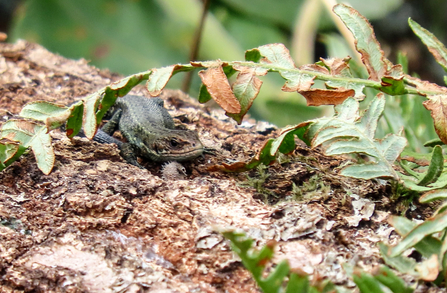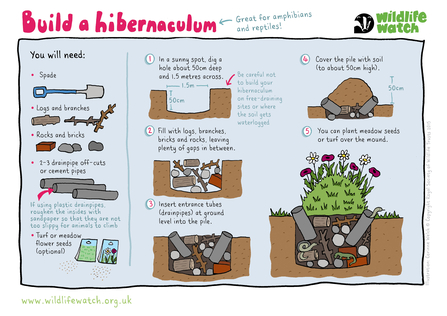On our recent trips up to Dropping Well Farm we have been lucky enough to spot a regular visitor on the log piles we have created there. This little cutie is a juvenile common lizard, who is having a lovely time catching the sun in amongst the safety of some bracken.
Lizards
Common lizard by Tom Marshall

Common lizard by Ion Riley
Common lizards are the only lizards with legs that we see in our part of the world; our other native legged lizard, the sand lizard, is very rare and restricted to areas in the south of the England. Did you know, though, that there are actually three native lizards in England but the third is often mistaken for a snake as it's legless; the confusingly named slow-worm is more widespread but also shares heathland habitats with our friend the common lizard.
Common lizards are commonly found on heathland, in woodland edges, grasslands, moorlands, commons and along sea cliffs. They are widespread throughout Europe and can even be found within Arctic Circle! They are ectothermic, or ‘cold-blooded’, which means they can’t generate their own body heat like us. This means that they're found in open spaces, where they can sunbathe to get warm, that have enough cover to hide from predators like foxes, hawks and jays. The clever little lizards even have an amazing protection method - they can shed their tail, which continues to wriggle to distract the predator whilst it escapes! This may be a nifty way of making an escape but it takes a lot of energy to regrow the tail afterwards.
Although you will often see them sunbathing in the day, at night they hide beneath piles of rocks or logs or even in underground burrows. In winter, they snuggle down with other lizards in these places, waiting for the warmth of spring to wake them up for mating and feeding on the abundance of insects and spiders.
Males are generally spottier and females are usually more stripy. Males also have yellow/orange mottled undersides, which get brighter during the breeding season, while females are pale. Females are viviparous, which means they 'bear live young’ giving birth to an average of seven, inch-long juvenile lizards each year. This is actually an adaptation to colder climates, which is why they can survive so far north, unlike many other reptiles.
Common lizards and newts often get confused as they can be similar sizes. We often associate newts with water but this is where it gets confusing. Common lizards are good swimmers and will dive underwater when threatened and, outside of the breeding season, newts are often found, which doesn’t help with this confusion. However, newts are amphibians and have smooth skin whereas lizards have scaly skin. In addition, lizards will move away quickly when disturbed whereas newts are much slower.
If you would like to spot a Common Lizard, walk slowly looking between dry paths and vegetation. You’re most likely to see them in sunny open areas and possible basking places, such as brash piles, low logs and open grassy spots.
The rustling movement of a lizard darting for cover is often the first (and only) sign you’ll get but it’s worth returning – lizards stick to the same basking spots.
Although they're widespread, the common lizard is no longer common due to habitat loss. It is protected under UK law, however, meaning that it is an offence to deliberately sell, trade, injure or kill one.
Common lizards can be found in gardens so if you would like to help your local lizard population then you can simply create a log pile in your garden or, even better, build a hibernaculum for them to hide in at night and in winter. This will also help any other amphibians or reptiles that may need a safe space to shelter.
I hope you have enjoyed this blog, keep an eye out for my next one coming soon! In the meantime please do get in touch if you would like to get involved with the Saving Worcestershire’s Heathlands Project.
Beccy is working with people close to Dropping Well Farm and would love to hear from you if you'd like to get involved in helping wildlife in the area. Give her a call on 01905 754919 or drop her a line at beccy@worcestershirewildlifetrust.org



